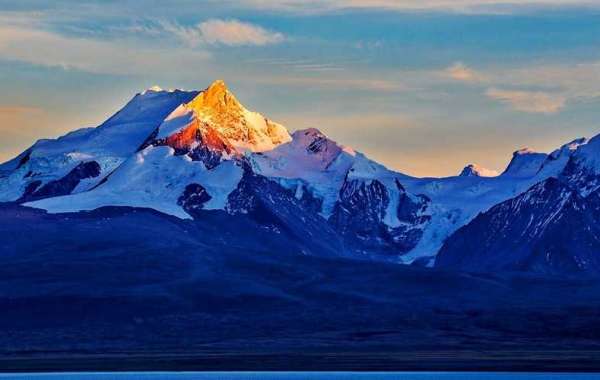There are basically 14 mountains in the world that tower 8,000 meters or more and these 14 mountains are collectively called the “Eight-thousanders.” All these mountains are located either in the Himalayan Mountain Range or Karakoram Mountain Range in Asia. Shishapangma made it to the list and is the 14th highest mountain in the world. It is located entirely in Tibet, in the Langtang Himal, on the Himalaya’s Tibetan side.
It was first scaled by a Chinese climbing team led by Hsu Ching in 1964. Afterward, it was opened to foreign climbers in 1980, and the first foreign team ascended this mountain in 1983. This climbing team was led by Mike Browning. As of 2003, there were only 201 successful ascents to the summit of Shishapangma. Nevertheless, there were around 19 fatalities.
More Facts About Shishapangma
Shishapangma is also referred to as "Gosainthān." It is 8,027 meters above sea level or 26,335 feet above sea level. It's situated in the south-central part of Tibet, around 120 kilometers from the Himalayas, near the Nepal-Tibet border. Moreover, it is the highest peak in the area of Jugal Himal that straddles the border of Nepal and Tibet. It has another peak considered as its subsidiary peak that is higher than 8,000 meters.
What Does the Name “Shishapangma” Mean?
The exact meaning of the term "Shishapangma" may be a bit confusing and its origin is also non-conclusive. Yet, according to Toni Hagen, a geologist, Shishapangma means a “crest above the meadow or grassy plain.” He derived this definition by combining the two Tibetan words "pangma" which means "meadow" or "grassy plain" and "chisa” or “shisha" meaning “comb” or “range.” So, taken together, “Shishapangma” means a “crest just above the grassy plain or meadow.”
Tibetan Expert Guntram Hazod, on the other hand, had another great idea for the etymology of the name “Shishapangma.” He explained that the literal meaning of the word “Shishapangma” came from two words, namely, “shisha” which means "animal meat of a dead animal that died naturally," and “sbangma” which means “malt dregs” or “leftover from brewing beer.”
Obviously, he has a tale to back up this contention. Thus, Shishapangma, for him, literally means “malty eggs and dead animal's meat.”
On the other hand, Gosainthan, a Sanskrit name for Shishapangma, signifies the "Abode of God."
How to Get to Shishapangma?
Shishapangma, of course, can be accessed either in two ways: via Tibet or via Nepal. So, if you are planning to scale Shishapangma or simply visit the Driver’s Camp, you can choose any of these options as your point of departure to the mountain.
Via Kathmandu, Nepal
Climbers who want to access Shishapangma from Nepal usually start in Kathmandu to prepare for the expedition. From Kathmandu, they cross the Nepal-Tibet border at Kodari and then move to Tibet. Climbers usually acclimate their body to the high-altitude weather at Nyalam which is 3,400 meters above sea level.
From there, they take a five-hour drive towards the Driver's Camp, which is located at 4,900 meters above sea level. From the Driver's Camp, their pieces of baggage are carried by yaks toward the base camp which is around 18 kilometers away from the Driver's Camp.
Via Lhasa, Tibet
The other route that you can take to Shishapangma is via Tibet. If you are coming from China or other parts of the world, you can book a flight to Lhasa, Tibet. From Lhasa, you would travel to the Driver's Camp and arrive there within two days. From the Driver's Camp, your baggage will be loaded on the back of rented yaks toward the base camp which is around 18 kilometers away from the Driver's Camp.
Whether you intend to scale Shishapangma or simply want to behold its majesty from afar, we know that you will surely not regret it. It is a once-in-a-lifetime experience that only those who have the courage to take will surely get to experience.










